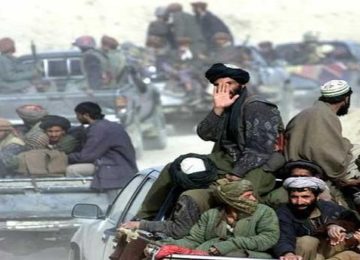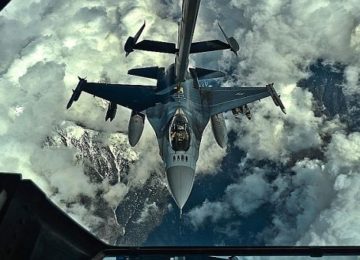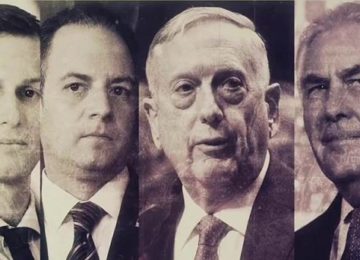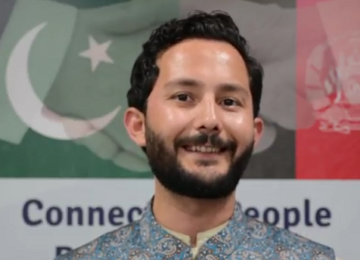Nearly three months after President Trump announced his new strategy for the war in Afghanistan, the United States and its international allies are still trying to come up with the troops required to carry it out.
The relatively few American and international troops in Afghanistan are charged with training the Afghan military and with helping them beat back Taliban forces. With the militants at their strongest level since the start of the war in 2001, the issue of troop levels has renewed importance.
“We’ve fought most of the year,” Gen. John W. Nicholson Jr., the commanding officer of American and international forces in Afghanistan, told reporters in Brussels on Wednesday, “however, at the lowest level of capability that we’ve ever had in the past 16 years.”
Since February, General Nicholson has requested several thousand additional troops for the mission, to break what he calls a stalemate in the Afghan conflict. Mr. Trump announced the new strategy for Afghanistan in August, and authorized an American troop increase of roughly 3,000.
Though military officials deem that increase necessary, the Pentagon has also stressed that for the American-led mission to succeed, more international forces, chiefly from NATO members, would be required.
For most of this year, General Nicholson said, the mission in Afghanistan has had only 80 percent of the troops it required. He said he had asked NATO members and other countries involved in the conflict to send more soldiers, but, “We’re still waiting for this to all play out.”
There are more than 14,000 American troops in Afghanistan today, including some who are part of a counterterrorism mission, and roughly 6,500 forces from NATO and other countries. Most of the unfilled positions would be for training Afghan security forces, whose future success is one of the pillars of Mr. Trump’s new South Asia strategy.
On Thursday, even though the NATO secretary general, Jens Stoltenberg, said the alliance was committing more soldiers to Afghanistan, American officials said efforts to reach the required troop levels were continuing. The officials did not provide an estimate of when that might happen, and did not specify how many positions remained unfilled.
“All these nations have to make hard choices,” Gen. Curtis M. Scaparrotti, commander of the U.S. European Command and the NATO supreme allied commander of Europe, told a small group of reporters on Thursday.
The shortages include personnel to train parts of the Afghan security apparatus, like the Afghan special operations forces and the Afghan Air Force, both of which have been championed by American and Afghan officials, including President Ashraf Ghani, as integral to the country’s four-year “road map” to drive violence down.
“We need our allies to fill these billets,” General Nicholson said, “so the Americans can do the things that only Americans can do, specifically the use of U.S. authorities in support of the Afghans.”
The commander added that he could hire contractors to fill some of the positions, if needed, or could divert American forces on the front lines in Afghanistan to rear-area training roles — choices he added he hoped to avoid.
The NATO troop shortage is not new: It has plagued the American-led mission in Afghanistan since the alliance decided to aggressively start training the Afghan military.
From 2009 to 2014, NATO was unable to fulfill its troop requirements, leaving, at times, thousands of key training jobs vacant, according to a recent report by the special inspector general for Afghanistan on lessons learned from the American involvement there. The government watchdog attributed the insufficient staffing levels to diminished political support in countries contributing troops, and to deployment costs.
With the war in Afghanistan now in its 17th year, there is little indication that the staffing problems will not affect Mr. Trump’s strategy, or that a few thousand more troops to fight or advise will turn the tide of the longest war in United States history.
William B. Caldwell IV, a retired lieutenant general who commanded the NATO training mission in 2010, warned of consequences if the required trainers were not available in Afghanistan: “If the trainers aren’t there, we’ll never reach the point where the Afghans will be self-sufficient,” he said. “It will never work if we just go to train them for a year or two.”
In addition to well over 2,500 civilian deaths, hostile action in Afghanistan since the beginning of the year has left 11 American troops dead.
The number of American airstrikes in Afghanistan has reached a level not seen since 2012. At the same time, the government in Kabul controls fewer districts in the country than at any point since the special inspector general for Afghanistan began tracking the data in December 2015, a recent report showed.
This article originally appeared in The New York Times on November 9, 2017. Original link.
Disclaimer: Views expressed on this blog are not necessarily endorsed or supported by the Center for Research and Security Studies, Islamabad.








